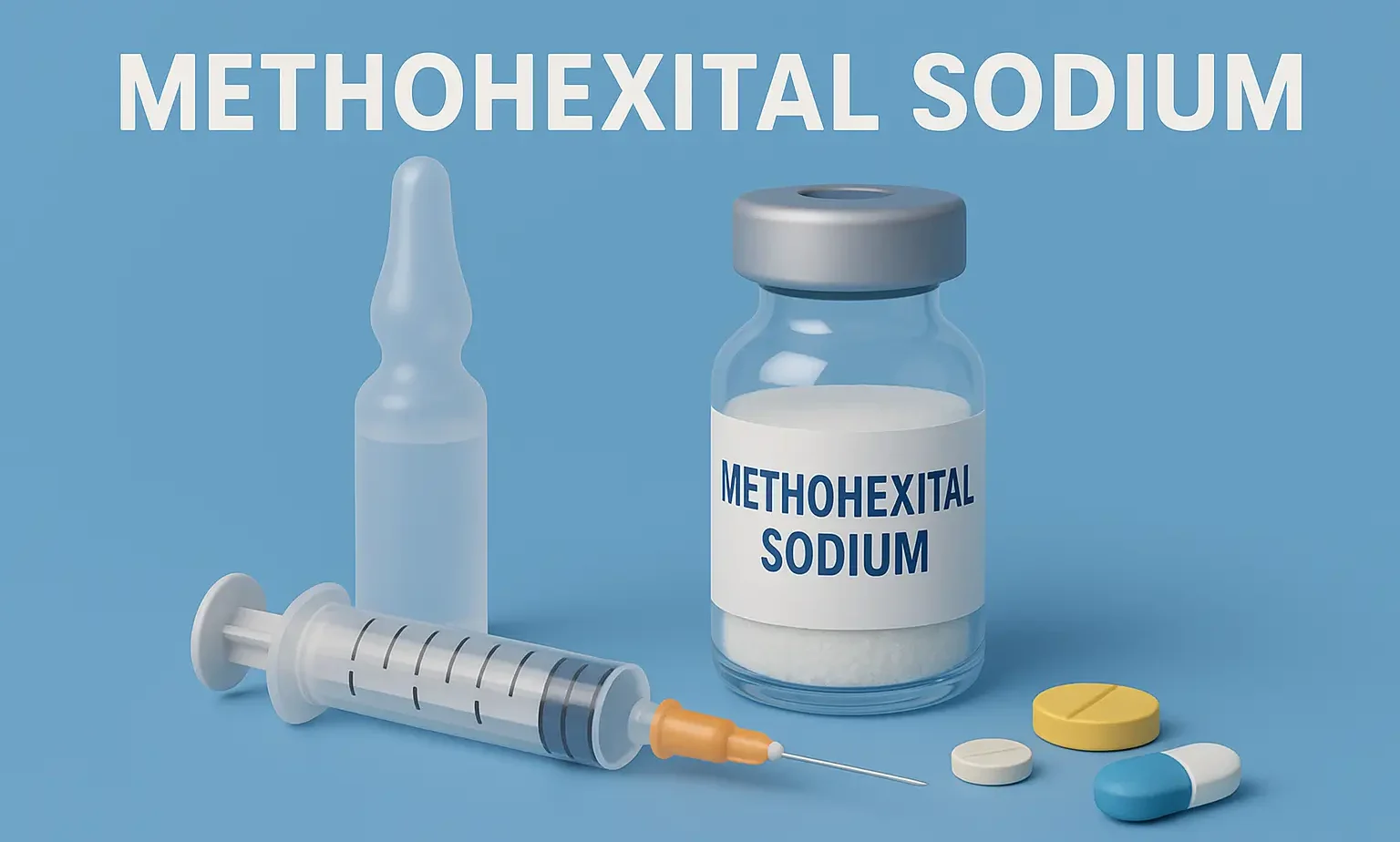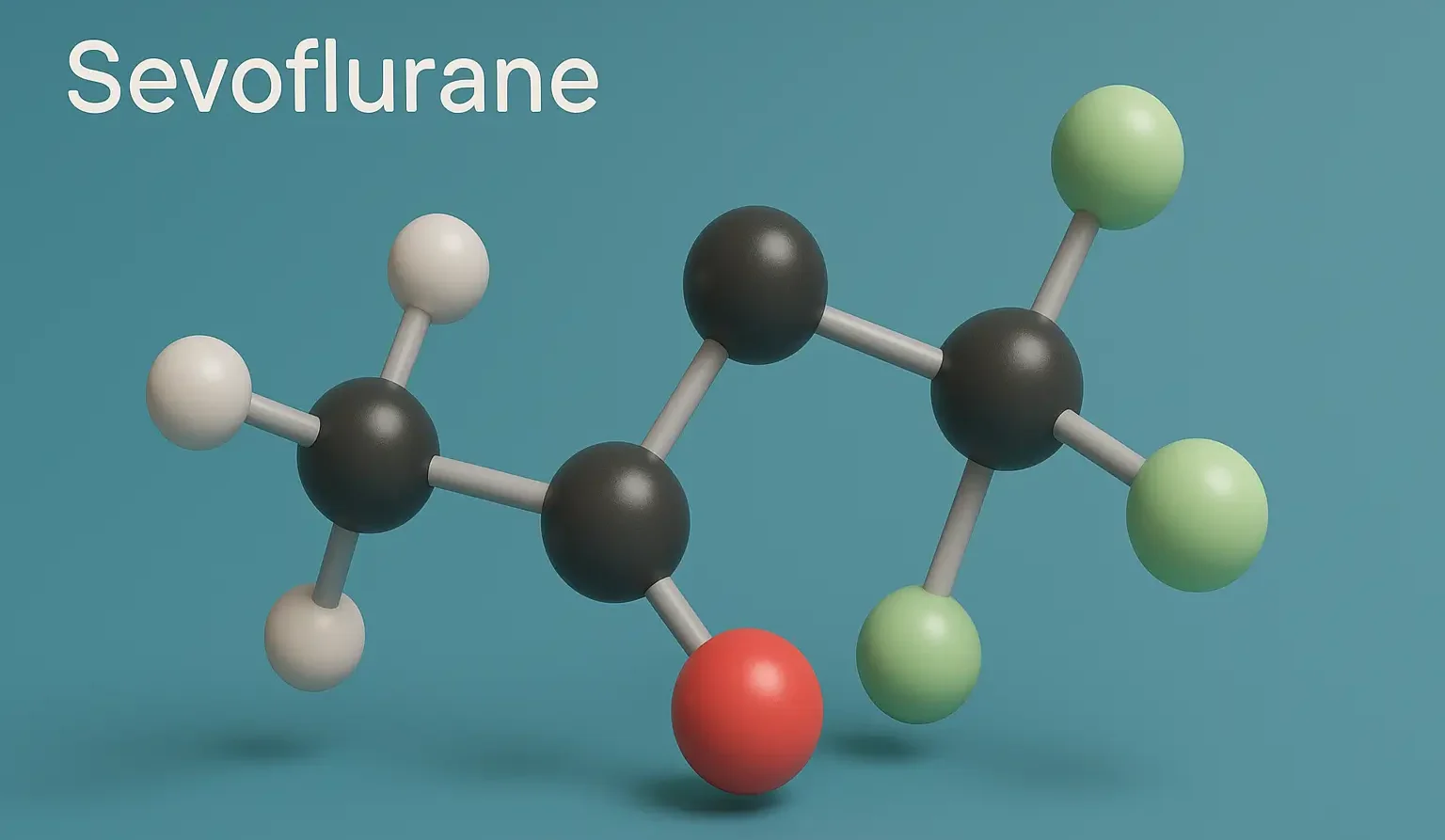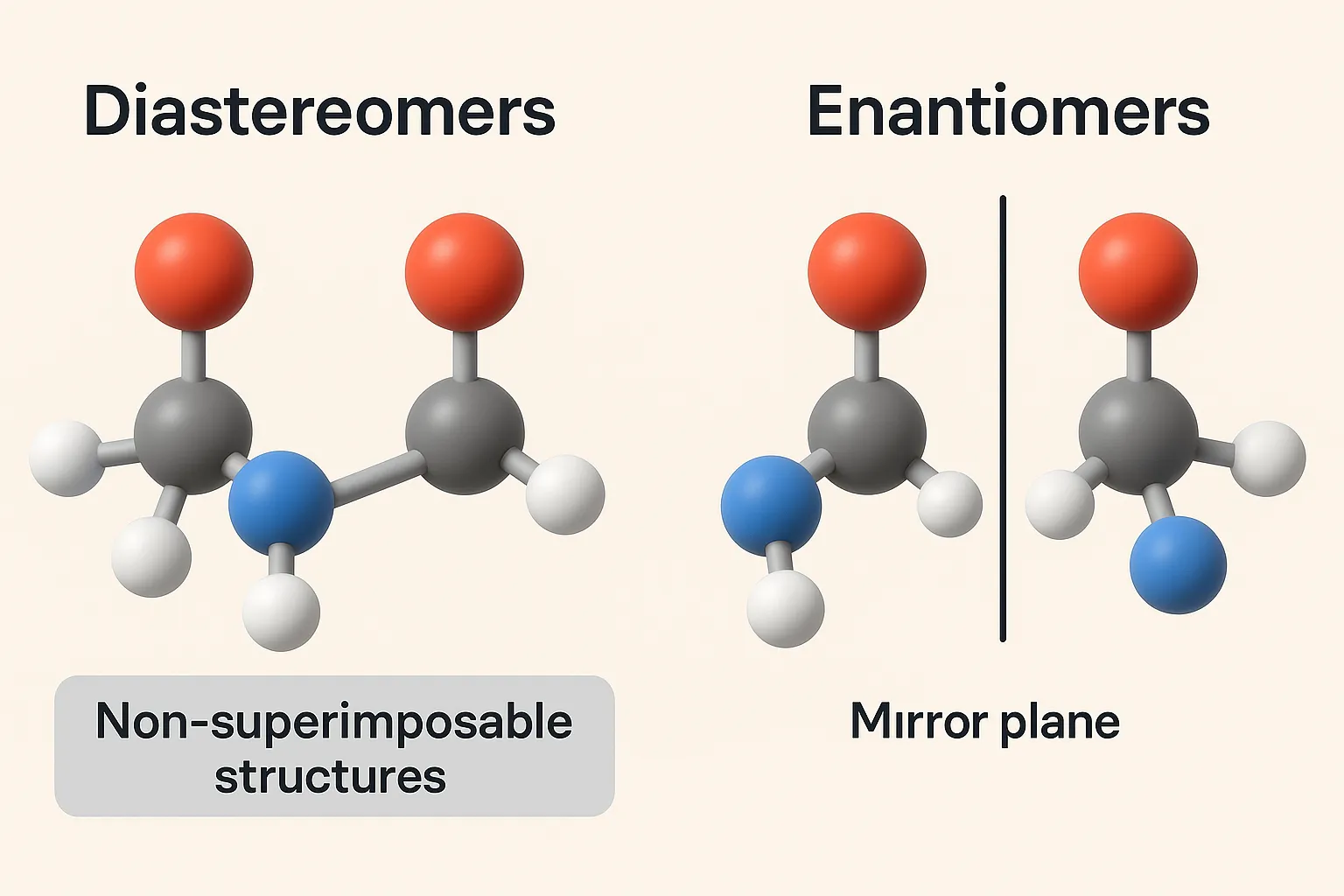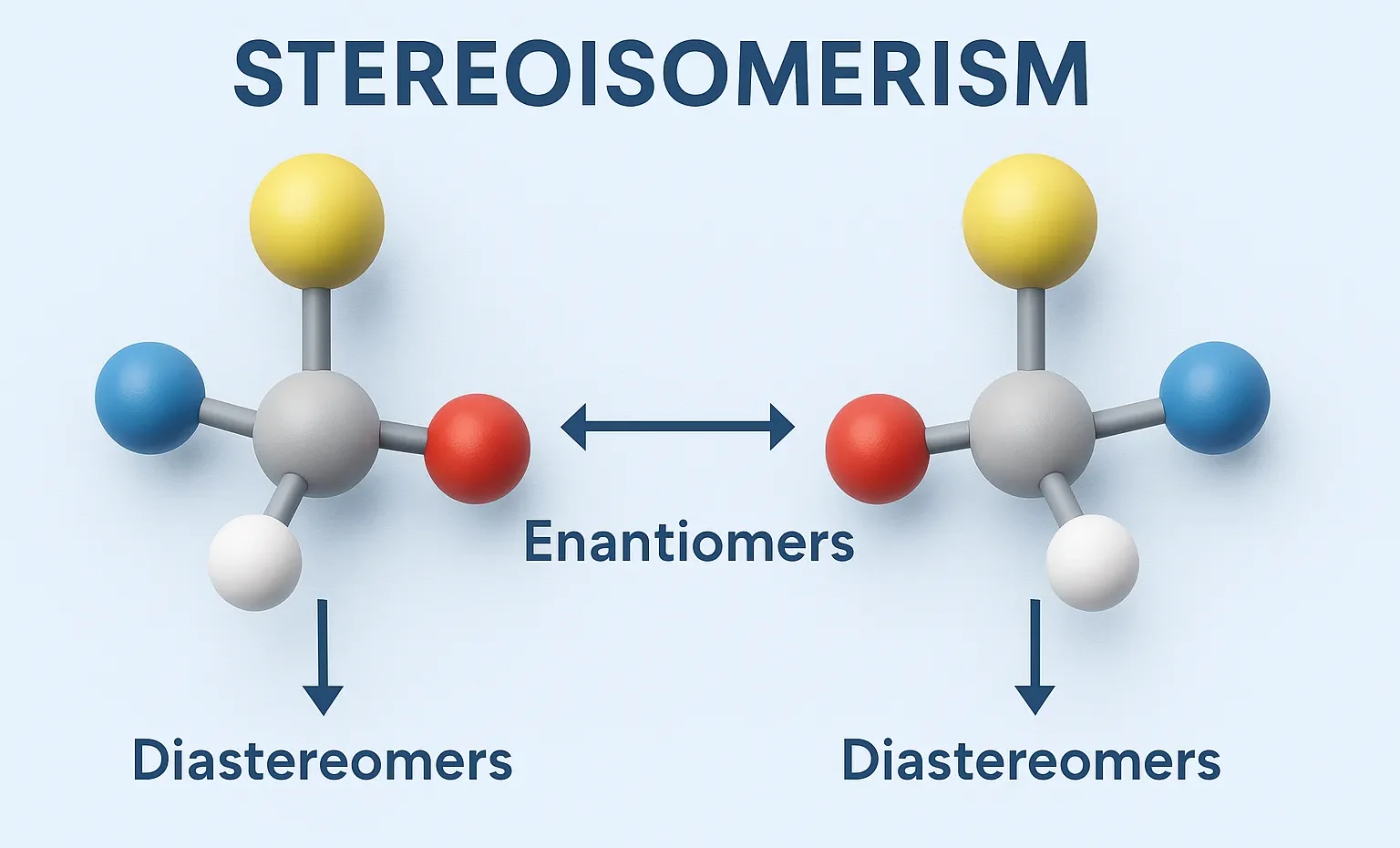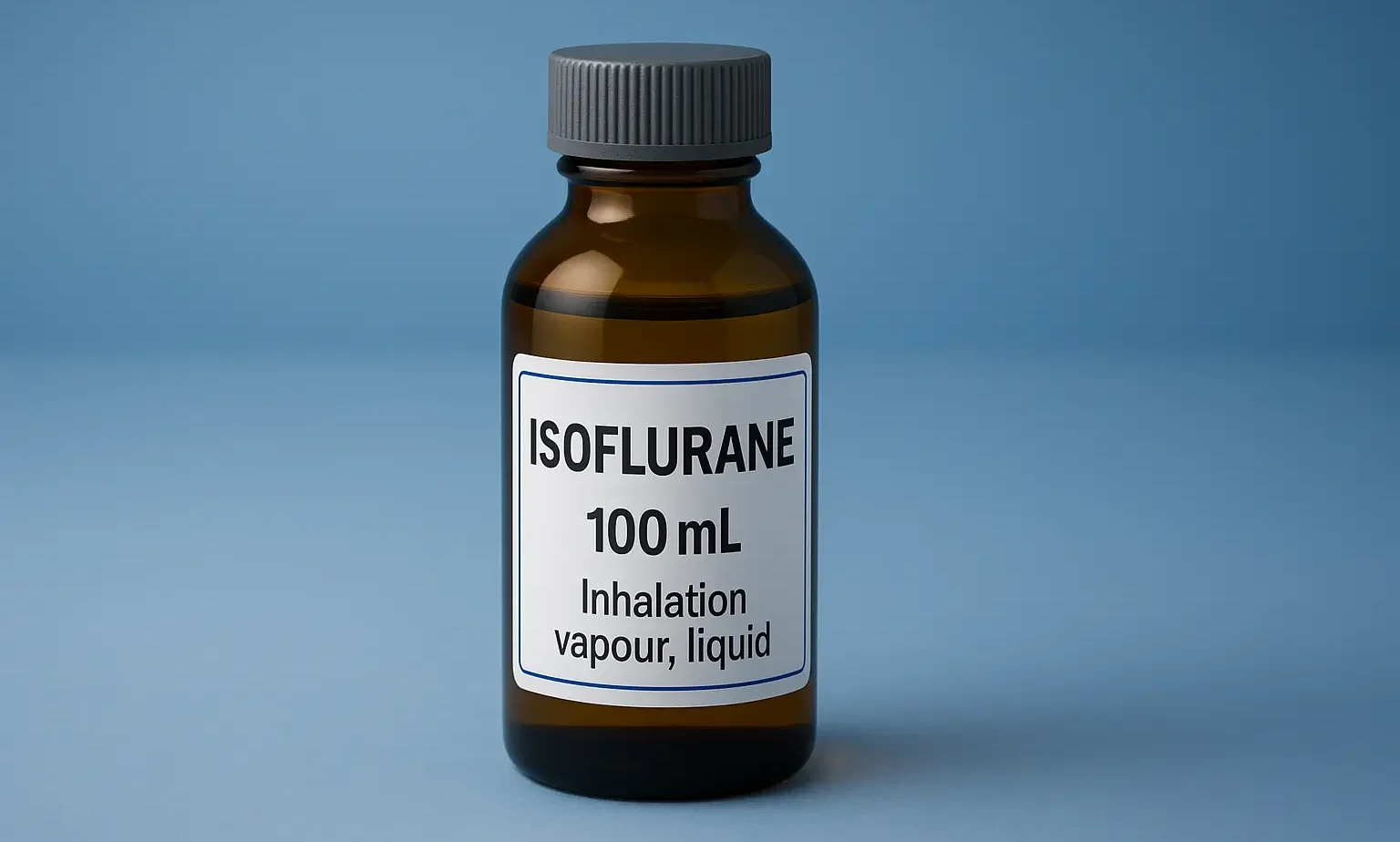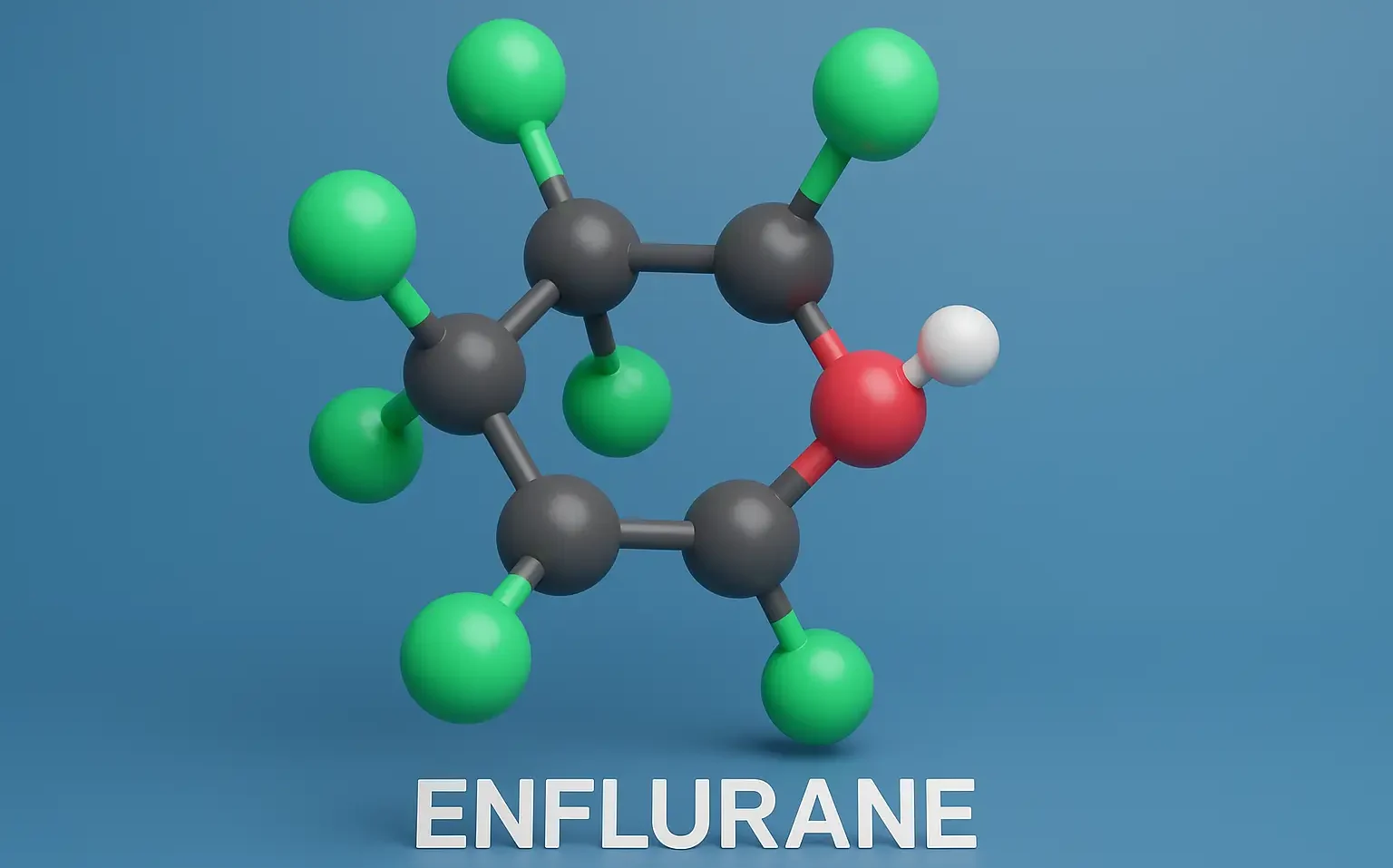Methohexital Sodium
Methohexital Sodium, a barbiturate, enhances GABA action causing rapid sedation with short duration. It is used for anesthesia induction and short surgical or diagnostic procedures. Chemical Formula: C₁₄H₁₇N₂NaO₃ Mechanism of Action: Potentiates GABA-A receptors Increases Cl⁻ influx → CNS depression Rapid onset due to high lipid solubility Uses of Methohexital Sodium: Induction of anesthesia Brief … Read more

